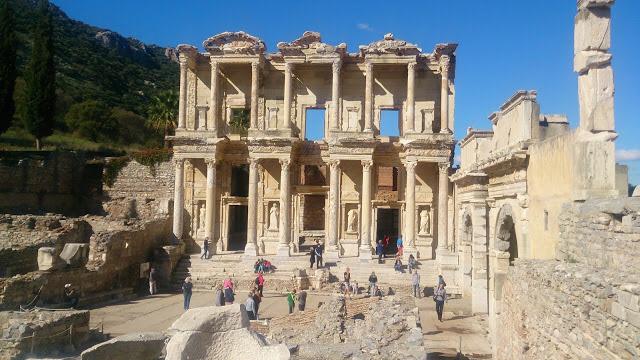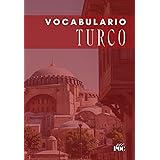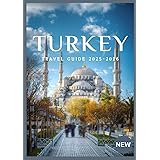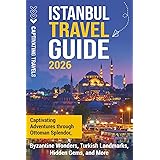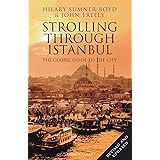The Mediterranean belt we are in; It is a world consisting of Spain, Southern France, Greece and Anatolia, and in our south the North African coasts and Egypt due to the abundance of the Nile. This belt of ancient civilizations shifts to Iran via Palestine, Syria, Mesopotamia, which is called the Eastern Mediterranean, and extends from there to India and China. The peoples around the Mediterranean and in Iran have been in a fusion and interaction since ancient times. Apart from these, as the 12th century Andalusian writer Kadı Ahmed El Endulusi said, the northerners, those in the north of the Danube and the Alps, and those in the south of Egypt and the Southern Mediterranean, are outside the civilization zone due to climatic and geographical conditions and are not creative. There are slogans that we repeat without knowing or thinking about, such as “Turkey is a bridge between civilizations, its historical riches are endless”. However, we need to think and consider them based on a certain knowledge.
Although Anatolia is not a continent where writing was found like Mesopotamia and Egypt, or even where the first example of a city-state emerged. But as time, he adopted and followed Mesopotamia and its written civilization, arts and crafts very quickly and stepped into written history in 2 thousand BC. A similar development, provided that it is not very intense, can only be seen in today’s Europe around the millennium. Today’s France, Britain and the south of Germany waited for the conquests of Julius Caesar, this famous commander and statesman, in order to step into the civilized history of humanity. For example, the Iranians are a nation that has introduced themselves to humanity since 1500 BC, that is, they write.
Of course, Persian has been written for 2,500 years, despite the changes it has undergone over time. The same is true for Greek. Arabic dominated Egypt and Syria in the middle ages with the Islamic conquests, but the languages that preceded it, namely Egypt’s Coptic language, Syria’s Aramaic, still live in church worship and written literature. In Anatolia, languages and ethnic groups disappeared one after another, but the architectural and artistic remnants of material civilization continued uninterruptedly. The last conquerors to come to Anatolia, let us frankly say, are the last people on earth to appropriate and translate a country as their culture, religion and language.
Even the Germanization of Europe was completed five centuries before Sultan Alparslan’s victory at Manzikert. Despite this identity change, Anatolia’s riches live above and below the ground, under a historical integrity. Anatolia started late but progressed rapidly Turkey is also the leader in the Mediterranean region in terms of variety and density in terms of the richness of archaeological and surface artifacts. It is Egypt, which can compete with itself and contains an inexhaustible wealth. Italy, Greece and Rome contain the most significant works in terms of medieval and modern times.
Turkey is a very rich country in terms of number and variety of ancient artifacts. Egypt and Italy compete with him in this regard. Egypt’s own ancient civilization is an inexhaustible treasure. The Mamluk period is a color added to it. Italy recognized the ancient Greek civilization in its south and in Sicily. Roman civilization is undoubtedly evident in Italy with its most important works. But let’s open a parenthesis here. The most magnificent works of Roman civilization outside of Italy are in Anatolia and then in Syria. Italy, as a country that created modern civilization, has the riches of the Renaissance in almost every region.
Byzantium in Ravenna and some Islamic ruins in Sicily are a fallout. The most important wealth of Islamic civilization in the north of the Mediterranean is in the Andalusia region of Spain. In Turkey, the extensions of the Hittites, Urartians, Mesopotamian civilizations before the Greco-Roman period are spread over a very wide area. The central structures of Byzantine civilization are in this country. Seljuk and Ottoman civilization came on top with their most magnificent examples. Let alone the restoration of the Seljuk caravanserais that surrounds the country today, we do not even have a complete inventory except for a work by Professor Ayşıl Yavuz. It is clear that these are not limited to a few.
Architects and masters of every newcomer to Anatolia benefited from the experience of the old ones and even their staff. The basic structures have been preserved. Just as the Hagia Yorgi Church and the great mosque in Leda in Palestine are adjacent, the Hacı Bayram Mosque adjacent to the temple of Augustus in Ankara is not a rare example. What then is the destruction? The most important factor is the abandonment of cities. In all of Western Anatolia, port cities are established at the mouths of the ports, as in the case of Ephesus, which bears the title of Metropolitan of Asia.
This convenient strategic location enriches and enlarges cities, but alluviums carried by the river cut off the city’s connection with the sea within a few centuries. The swamp and disease dim the life and future of the city, and the great earthquakes deplete the city. A wealthy country, Aegean cities have not seen truly devastating invasions, but time and geography have done that. Historians who are confused by timing and geography in Western thought; They say that the Muslim Turkish invaders destroyed a civilization by burning and destroying these cities. However, it was the end of the 13th century for the Turks to reach Western Anatolia. It is not possible to understand how the 800 years between the 4-5th century and the 13th century were removed from this calculation sheet.
Honestly, no one makes the history of the depression in a region as meticulously as the sattical times. It is enough to look at the examples in the Ephesus Museum; For example, the colossal statues of Emperor Augustus and his wife Livian had the sign of the cross engraved on their foreheads and were supposedly baptized. Early Christians did not wait for Muslim conquests 1000 years later to decapitate and smash the heads of the gods, goddesses and emperors of the polytheistic world. When the Turks came to this continent, however, they preferred to rehabilitate the old cities.
Pronunciation is different in the names used, for example; Like Paleokastron = Balıkesir or Kengriyon = Çankırı or Tripolis = Tirebolu or Tefreke = Divrigi in the sense of “Old Fortress”. Establishing a new city in an unfamiliar geographical environment is crazy, I guess this exception was only tried in Bursa Yenişehir or Ermenek in Karaman province. Anatolia was not a continent entirely inhabited by Hellenes; If that were the case, we’d be Hellenized too. Countless languages and tribes lived. For this reason, the country, whose conquest began in the 12th century, at the latest in the known history, became Turkish very quickly, and after a while, Genoese and Venetian merchants named our country Turchia or Turkmenya. Cities and castles appear in the most unlikely places on the coast and in the surrounding mountains. There are Georgian and Armenian churches in the Black Sea mountains and inland.
History of Turks; From the Steppes of Central Asia to the Gates of Europe
Imagine that a great tribe has traveled thousands of kilometers in three centuries… What does this do if it doesn’t change the world? This is how the Turks changed the world. For this reason, we do not need to produce an imaginary history and heroes, but only to learn the truth.
The History of the Turks begins with the debates on the origin of the Turks, who established one of the strongest civilizations of the Middle East when they were a nomadic tribe.
Subsequently, they migrated from Central Asia to Anatolia and Turkified the region and the principles of the culture they built there… All the details of the debates about where the name of Turks, a nation with a great heritage, a strong structure and historical richness, came from and how long this geography has been called Turkey…
The story of Anatolia, which took its present form with important wars and retreats, moreover, with painful land losses…
The reasons why Turkey was an important country for Europe and a problem to be dealt with during the 400 years between the Battle of Manzikert and the conquest of Bosnia…
Moreover, from the Oghuzs to the Kipchaks, from the Pechenegs to the Seljuks and the Ottomans, a great empire, and not only the Turks; The history of the Russians, Mamluks, Karakoyunlu, Ghaznavids, Safavids, Chinese, Indians and Arabs…
In other words, the place of the Turks, who have always influenced the civilizations that shared the same geography for centuries and played an important role in bringing Eastern and Western cultures to each other, is under the spotlight.
Source: Prof Dr İlber Ortaylı

